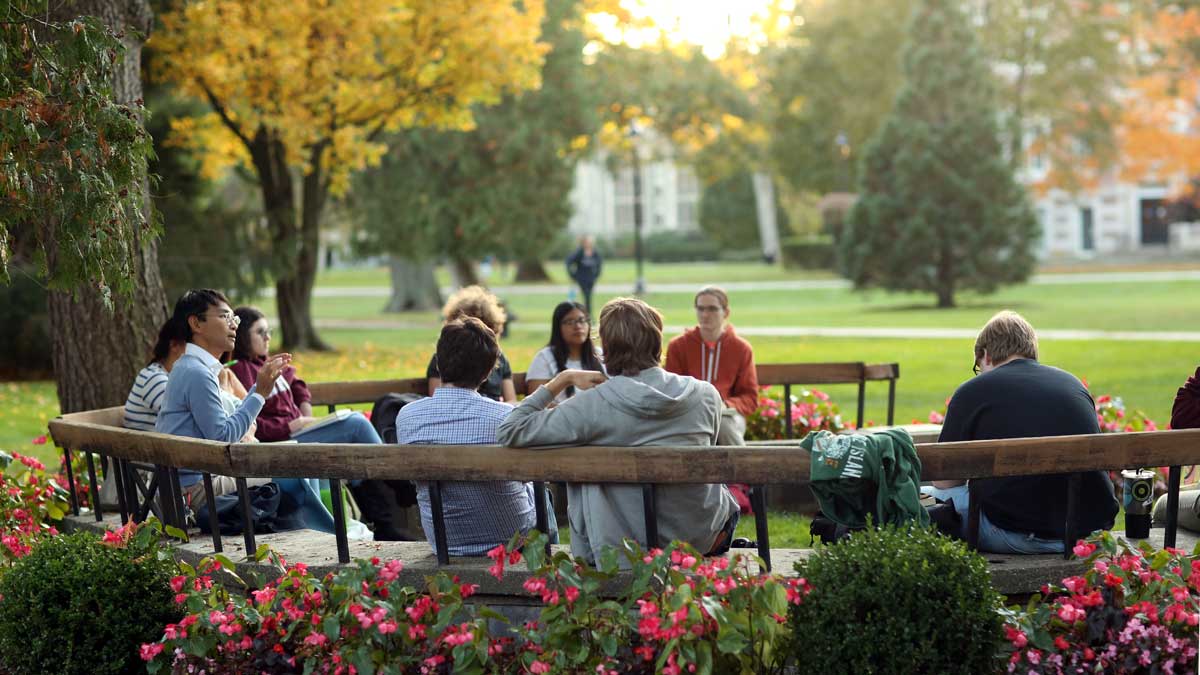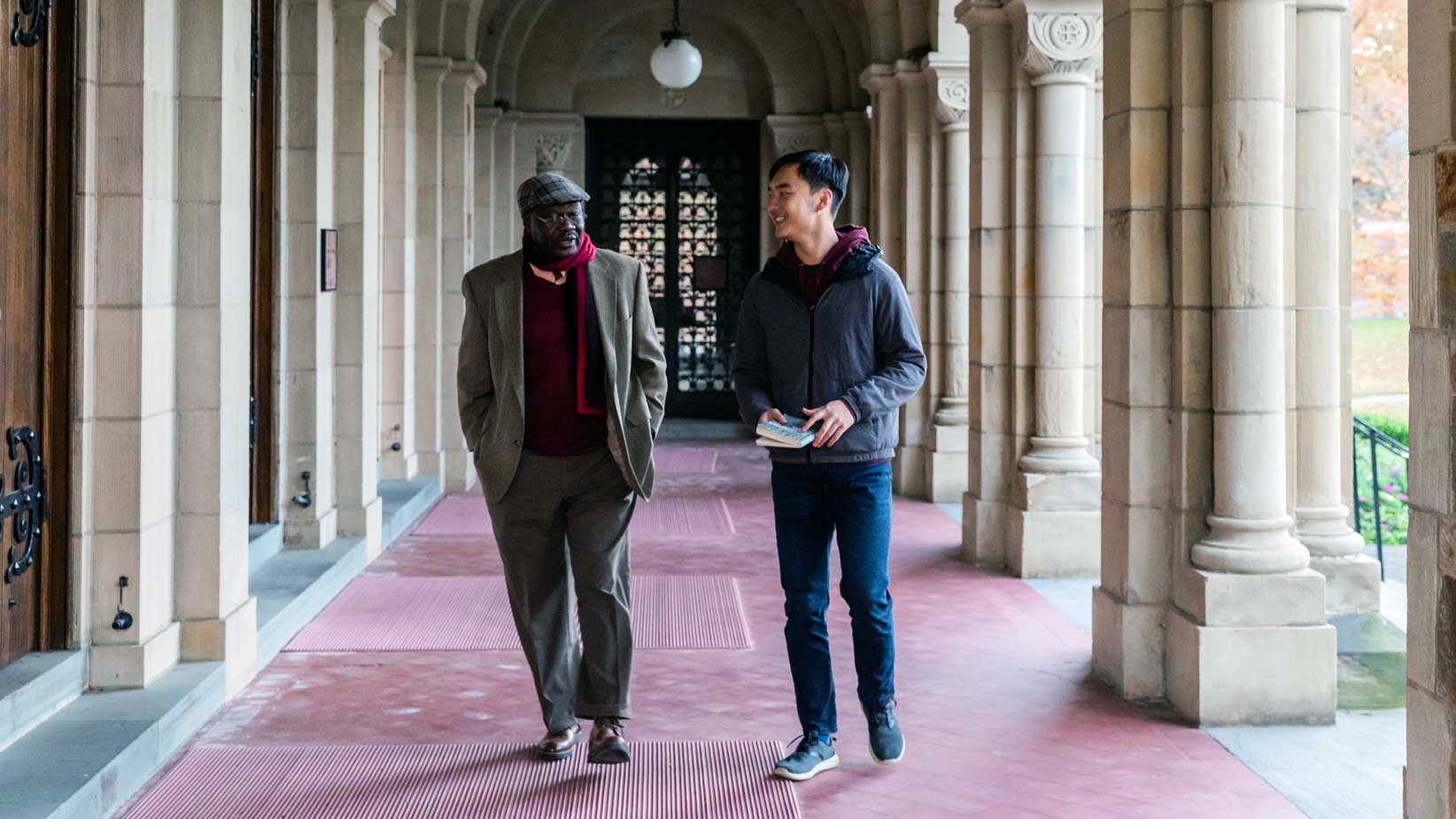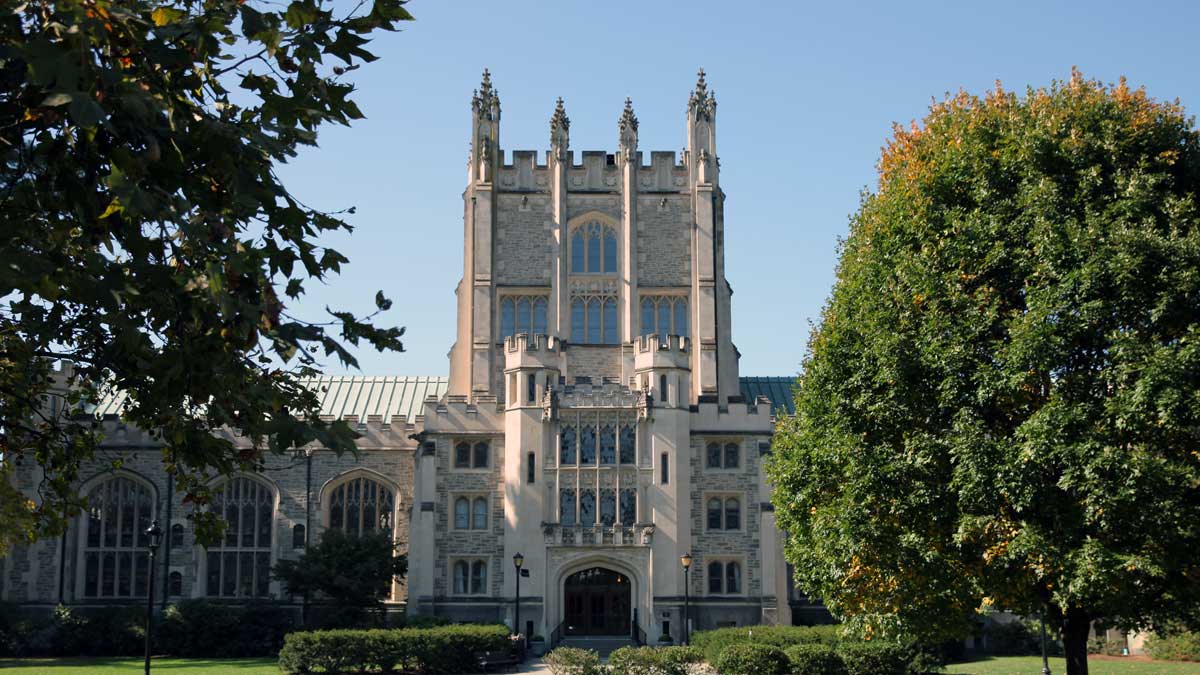Academics
The Vassar curriculum has always been characterized by boldness, breadth, and flexibility. Vassar was among the first colleges to offer courses in drama, psychology, and Russian, the first to offer an undergraduate degree in cognitive science, and among the first to experiment with interdepartmental courses in the early 20th century.
Departments and Programs

Today, the curriculum is broader, richer, and more varied than ever, with an increasing emphasis on a multidisciplinary approach to intellectual inquiry. Students choose among 30 departments, 3 interdepartmental programs, 14 multidisciplinary programs, the interdisciplinary Independent Program, 50 majors, 2 Accelerated and Dual Degree programs, and over 1,000 courses.
Faculty
The Vassar faculty is an amazing and diverse community of scholars, artists, writers, scientists, musicians, and thinkers. They are attracted to the college by our reputation as one of the nation’s top liberal arts colleges, by the opportunity to engage with talented and highly motivated students, and by the cross-disciplinary collaborations that Vassar fosters. Learn more about the faculty and their research/teaching interests.
Majors and Minors

Majors
Vassar students generally declare a major by the end of the sophomore year. Students have a choice of four paths to the bachelor’s degree: concentration in (1) a department; (2) an interdepartmental program; (3) a multidisciplinary program; or (4) an individually tailored course of study in the independent program. Within the major field, requirements range from 10 to 17 courses. See a list of all majors.
Minors
In addition to the major concentration, a student may undertake an optional minor (correlate sequences) in most departments and programs. The minor provides the opportunity to organize studies outside the major field of concentration, progressing from introductory to advanced work under the guidance of an advisor in the relevant department or program. A minor ordinarily consists of six courses. See a list of all minors.
The Vassar Institute for the Liberal Arts
The Institute will convene scholars and thought leaders from Vassar, our local area and around the globe. Learn more
The Libraries

The libraries at Vassar are extraordinary and rank among the very best liberal arts collections in the United States both in the number of titles (over 1,000,000 volumes) and in their exceptional variety and depth. The libraries include the Frederick Ferris Thompson Memorial Library, considered one of the most beautiful Collegiate Gothic buildings in the country; the Helen D. Lockwood Library; the Art Library; the George Sherman Dickinson Music Library; and the Martha Rivers and E. Bronson Ingram Library, which also houses the Catherine Pelton Durrell Archives & Special Collections Library.
Catalogue
The Vassar College Catalogue, published annually, is a comprehensive document that provides not only course descriptions but information about the history and mission of the college; the nature of the academic/residential experience; academic requirements and courses of study; departments and programs; and a listing of the members of the faculty, administration, and Board of Trustees.
Research
Students interested in doing original research have many options. Students work as research assistants for faculty members in virtually every department, either for academic credit or as paid assistants. A student who is interested in studying a particular topic can ask a faculty member to supervise them in an independent study project. During the summer, there are three research programs on campus—one in the sciences, one in the humanities, and one in the arts. Students who qualify for these programs immerse themselves in a research project for 10 weeks, working one-on-one with a faculty mentor—and earning a generous stipend.
Resources and Facilities
Vassar’s resources and facilities are of the very highest quality—extraordinary libraries (art, music, and special collections) with over a million print volumes; The Frances Lehman Loeb Art Center with more than 21,000 paintings, sculptures, prints, drawings, and photographs spanning the history of art from antiquity to the present; a 500-acre farm and ecological preserve; and division-specific resources that range from a historic instrument collection in Skinner Hall to a single crystal X-ray diffractometer in the Bridge for Laboratory Sciences.
Calendar
See the Academic Calendar on the Catalogue site or Subscribe to our Google Calendar (.ics)